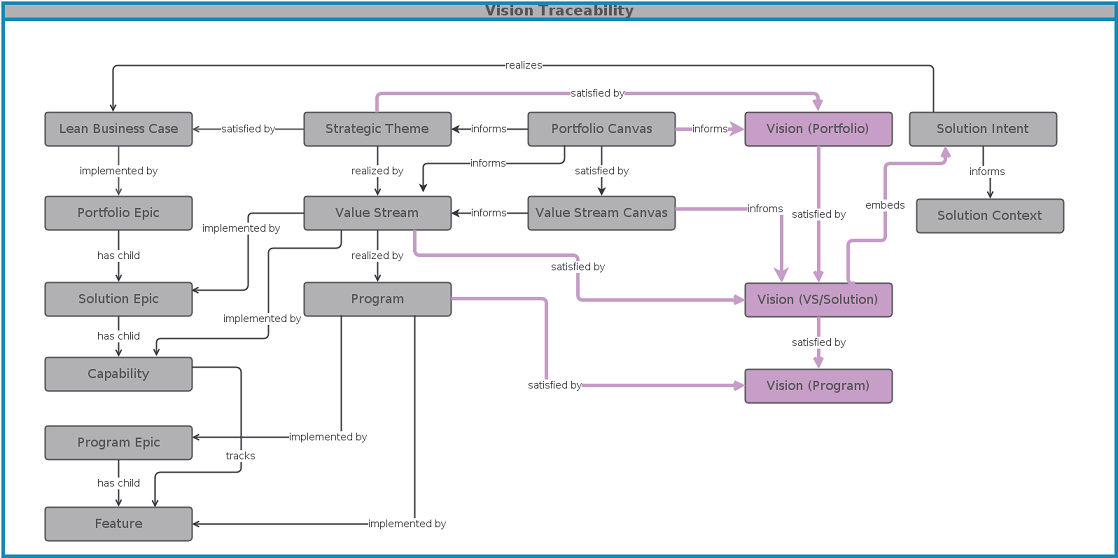| Artifact: Vision |
|
Stakeholder Type |
Representative |
Success Criteria |
Additional Responsibilities |
|---|---|---|---|
|
Sponsors |
|
|
|
|
End Users |
|
|
|
|
Partners |
|
|
|
|
Insiders |
|
|
|
Other Scope Considerations
<Any other thoughts that help the team and outsiders understand the scope of the solution and project including things that are out of scope that are asked about frequently.>
Project Constraints
|
Type |
Constraint |
Source |
Rationale |
|---|---|---|---|
|
Schedule |
|
|
|
|
Budget |
|
|
|
|
Resources |
|
|
|
|
Technology |
|
|
|
|
Compliance |
|
|
|
|
Conformance |
|
|
|
|
Quality |
|
|
Attributes
The Vision artifact type defines the following custom attributes:
- Owner - The owner of the artifact
- Status - The status of the artifact (see States below)
States
The Program artifact type has this workflow:
- Draft - Initial state of the artifact
- Under Review - Indicates that the artifact is being reviewed by the Portfolio team
- In Playback - Indicates that the artifact is being reviewed with stakeholders and customers for feedback
- Approved - Indicates that it is approved by the Portfolio team as well as stakeholders/customers
- Rejected - Indicates that the artifact is rejected and no further work will be done
- Deprecated - Indicates that the artifact has been deprecated and there may possibly be a newer version of it
Traceability

© Copyright IBM Corp. 1987, 2020. All Rights Reserved. |